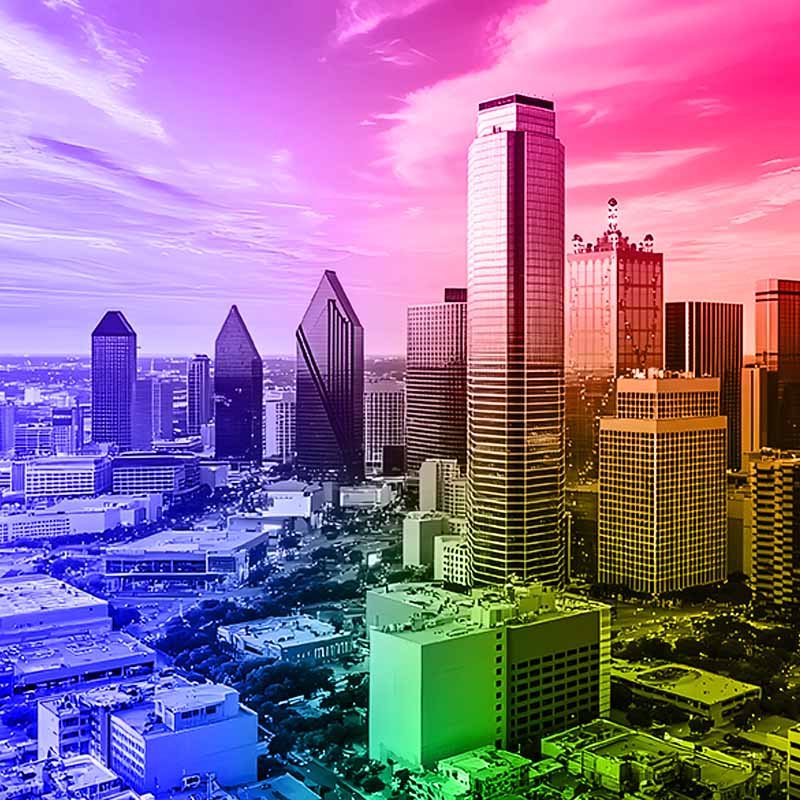

Let’s talk about momentum—specifically, the kind that’s making Dallas-Fort Worth one of the hottest commercial real estate markets in the country. Some sectors are thriving in ways that even seasoned brokers find thrilling, while others are requiring finesse and deep market insight. In this post, we’ll focus on the bright spots: the sectors generating buzz, breaking absorption records, and attracting long-term players with their resilience and innovation.
Because in a city that’s growing as fast as Dallas, success favors those who know where to look and how to lead the conversation. Ready to explore what’s shaping the market? Let’s dive into the hotspots.
Industrial real estate feels almost inevitable in DFW—a sector so aligned with the city’s national logistics hub status that it continues to deliver (literally) for investors, tenants, and developers alike. With strategic highways, rail infrastructure, and endless demand from e-commerce, DFW’s industrial market remains one of the safest bets in commercial real estate.
As Newmark points out, South Dallas and the Alliance/Airport corridor have become significant investment hubs. While construction starts have cooled compared to recent years, demand for high-quality, logistics-friendly properties continues to outpace supply. It’s this demand-supply imbalance that reinforces the sector’s stability and growth potential.
What’s the play? Industrial offers predictability in an unpredictable economic climate. Whether you’re a developer looking for your next build site or an investor scouting long-term returns, the fundamentals are as strong as ever.
We all remember the narrative from a few years ago: retail was losing steam, malls were closing, and online shopping was king. But Dallas retail has shifted the narrative entirely. Today, it’s focused on experience. High-growth suburbs like Prosper, Mansfield, and Frisco are the epicenters of this transformation, where mixed-use developments and service-oriented tenants lead the charge.
Texans want spaces that offer more than shopping. They want dynamic experiences—fitness hubs, community healthcare providers, and vibrant dining options that feel personal and engaging. Grocery-anchored centers, in particular, have become a reliable asset class in retail’s second act, a point echoed by Weitzman’s 2025 report.
For brokers and developers, the take-home message is this: Retail isn’t simply about location anymore; it’s about how the space lives and breathes for its audience. Life happens in well-designed, experiential centers.
If industrial and retail are sprinting in the CRE growth race, multifamily is easing into pace for the marathon. The latest numbers from the Yardi Matrix 2025 report show elevated vacancy rates. Still, the context matters: Dallas saw a surge of new multifamily development, and the market is in rebalancing mode. Supply is finally catching up to demand, for now.
But don’t mistake this “pause” for a pullback. Absorption is improving, construction starts are slowing, and as MMG Real Estate Advisors Market Snapshot predicts, landlords will have the upper hand again by late 2025. Submarkets tied to high job growth and affordability are already showing promise, and as Dallas continues to attract new residents, multifamily remains a cornerstone of the city’s CRE portfolio.
Looking forward, Multifamily is a long game. For those investing today, it’s about picking the right corridors and thinking about how you’ll position assets to meet future demand.
Dallas-Fort Worth’s commercial real estate market is thriving, but it’s not just the numbers that tell the story—it’s the dynamics behind them. Industrial real estate commands attention with its unrelenting logistics demand and infrastructure advantages, creating opportunities for steady, long-term growth. Retail, once on shaky ground, has redefined itself into vibrant, experience-driven spaces in high-growth suburban pockets, proving there’s plenty of room for creative transformation. Meanwhile, multifamily is catching its breath after rapid development, but its long-term fundamentals remain strong as population growth fuels demand.
The real takeaway here? Success in DFW CRE isn’t just about following trends—it’s about understanding the needs powering them. Whether you’re ready to invest in logistics hubs, revitalize retail spaces, or play the long game with residential development, the time to act is now. Growth here doesn’t wait, so what’s next on your radar? Let’s explore how to turn Dallas’s momentum into your advantage.